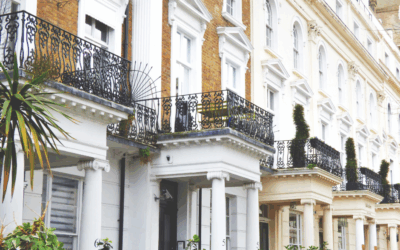Introduction
In our first article, we set out our mission: to produce a Building Safety Case and Report ready for the Building Safety Regulator in a way that delivers both peace of mind and value for money for residents.
We’ve broken the process into nine clear steps. This approach allows us to:
- Share progress transparently with residents.
- Avoid committing to unnecessary, expensive surveys upfront by assessing each stage and justifying costs with clear evidence and reasoning.
Another key principle is leveraging existing documentation and information wherever possible. Too often, residents are asked to pay for consultants or surveyors to tell them what their property manage should already know.
Here is our 8-step plan:
1) Information Gathering and Organisation
Our first step is to compile and organise all available documentation related to the development. This includes:
- Handover documentation from the developer.
- Previous surveys commissioned by the property manager.
- Maintenance records, service sheets, and repair logs.
- Resident complaints and day-to-day repair data.
This forms what Dame Judith Hackitt referred to as the ‘golden thread’ of information—a complete and accessible record of the building’s safety-related details. Thanks to our purpose-built property management platform, much of this data is already centralised, organised, and accessible as part of our day-to-day activities. This ensures efficiency, reduces duplication, and guarantees that no critical details are overlooked when compiling the safety case.
2) Engage the Right Support
While the Building Safety Regulator emphasizes that preparing a Building Safety Case should be common sense, certain aspects require specialised expertise. Reviewing complex technical documents, assessing risks, and developing mitigations often go beyond standard property management practices.
At ALLRES, we’re fortunate to have an established network of experienced and qualified surveyors already familiar with our developments. These professionals will assist with tasks in clear stages, allowing us to evaluate progress and outcomes before committing to the next steps. This ensures a cost-effective and transparent process.
3) Information Review and Gap Analysis
Not all information will be immediately available, and some gaps are inevitable. We will identify the critical information required to form a Building Safety Case. This includes:
- Regulatory requirements applicable to all buildings.
- Development-specific details based on factors such as construction type, size, and resident demographics.
For example, we must understand how the building behaves in various fire scenarios and whether its safety systems provide adequate protection for residents.
4) Address Key Gaps in Information
Where gaps are identified, we will address the most critical issues first. This might involve commissioning targeted surveys or requesting specific documentation from contractors or suppliers. By focusing on the most important gaps, we’ll avoid unnecessary costs and expedite progress.
5) Risk Assessment Workshop
Risk assessment lies at the heart of the Building Safety Case. Every building has risks; what matters is how they are controlled and mitigated, and what the potential consequences might be.
We will:
- Conduct site inspections with experienced surveyors.
- Involve resident directors and representatives of resident associations where relevant.
- Walk through the building to identify potential risks and assess their impact.
For each risk, we’ll evaluate existing mitigations, such as the design of a smoke extract system, its ongoing maintenance, and the results of regular site tests. This will help us build a comprehensive picture of residual risks and the likelihood of occurrence.
6) Prepare an Action Plan
Based on the risk assessment, we’ll prepare a prioritised action plan. Key elements include:
- Addressing the riskiest and most impactful issues first.
- Balancing cost against impact and likelihood.
- Keeping residents informed at every stage with clear, transparent communication in line with the Resident Engagement Strategy.
This step-by-step plan ensures we address safety issues systematically and efficiently.
7) Compile the Safety Case Report
The Safety Case Report summarises all findings, including:
- Identified risks and their mitigations.
- Controls in place.
- The action plan for addressing residual risks.
The report will be structured to provide clarity to the Building Safety Regulator while remaining accessible to residents, ensuring everyone understands the measures in place and the steps being taken.
8) Ongoing Management
Producing a Building Safety Case isn’t a one-off exercise. It’s a living document that must be regularly updated. By integrating the safety case into our management platform, we’ll be able to:
- Incorporate observations and findings from monthly site inspections.
- Document all maintenance and repairs that affect our risk controls and mitigations.
- Ensure all resident communication is kept in once place.
With our property management platform, updating the Building Safety Case Report will be as simple as a one-click process, ensuring compliance remains a seamless part of our day-to-day management.
Next Steps
In the next article, we will delve deeper into the ALLRES platform and how we’re developing it to manage the ‘golden thread’ of information.



